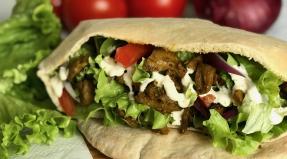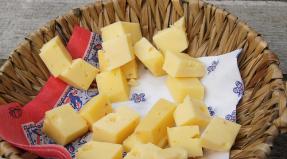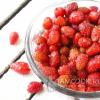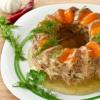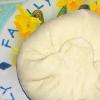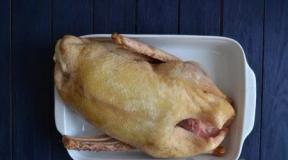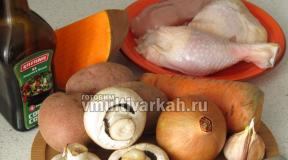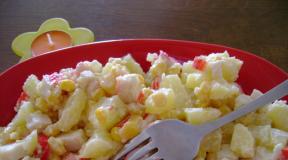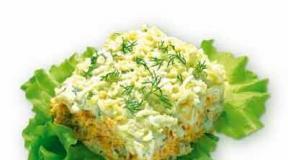Black Sea horse mackerel spicy salted. Salted horse mackerel at home, recipe with photo
The Black Sea horse mackerel belongs to the order Perciformes (Perciformes) of the horse mackerel family. Due to the very special structure and arrangement of its scales, this fish is very convenient to clean. The fish has a small size, which also makes it convenient for processing at home. Gourmets will certainly enjoy its special aroma and slightly specific spicy taste.
Choose fish for drying of the same size, which should not exceed 15 cm. To begin with, the fish is salted, and then dried. For these purposes, medium-fat sea and low-fat fish are usually used. Dry salting should be used to prepare the fish for smoking. To remove excess moisture from the fish, before salting it, it is necessary to rinse and dry the horse mackerel.
After that, dishes for salting are selected. An ordinary ten-liter pan may be suitable for this. This pot fits well in the fridge. The bottom of the pan is sprinkled with coarse salt. Salt should not be iodized. The salt layer should be 0.5 mm. The fish is laid out in layers, each layer of fish is sprinkled with salt. You should not lay out the fish to the top edge, be sure to leave a distance of 5 cm to the top. The top layer of fish is sprinkled with salt. The layer thickness should be approximately 1.0 - 1.5 cm.
On top of the last layer of horse mackerel, it is necessary to put a plank (and, if possible, a circle) made of wood. For these purposes, you can use a plate or a lid from a small saucepan. A load is placed on the circle. Its weight should be at least 10-15% of the weight of the fish in the pan. After 3-4 hours, the fish begins to secrete intercellular juice under the influence of salt. It is at this point that the pan is placed in the refrigerator. The temperature in the refrigerator should be + 3-5 degrees. The pan should stay in the refrigerator for 2-3 days. After salting, the fish is washed under a tap. The water must be cold. You can wash the fish in a colander, which is fixed over the sink to drain the remaining water.
Many do not know how to properly hang a fish, by the tail or by the head. It is best to hang the fish by the lower jaw. To do this, use a regular paper clip. The clip needs to be straightened. However, there are no clear rules for hanging fish, everyone chooses a method convenient for him. It is better to hang fish on the balcony. The balcony must be necessarily closed so that flies do not sit on the fish, dust does not fly. On the balcony, air circulation will be much better than in the room.
You can also hang fish on hangers through the eye. If you have to dry the fish on the street, wipe it with gauze soaked in a solution of 9% vinegar. This is necessary to protect the horse mackerel from flies. After 4-5 days the fish will be ready. Humidity should be no more than 80%, and the temperature should be 20-26 degrees.
I really love fish in any form and have tried a lot of cooking options. My father is a fisherman, so fish “garlands” often hang on the balcony, and the smell of stewed and fried fish comes from the kitchen. And as soon as I come to visit my parents, my dad will tell me a couple more successful recipes from fisherman friends and treat me with something new. But in this article I will talk about how to properly pickle fish. This salting recipe is the fastest and most versatile, it will turn out to cook almost any medium-sized river or sea fish. And, of course, this is the best of all the methods tested.
Black Sea horse mackerel is my favorite marine fish. Fatty, juicy, without scales and with a small amount of bones. It's easy to clean and a pleasure to eat! The Black Sea horse mackerel is usually small in size and is perfect for salting, frying or stewing. For example, here is a recipe for horse mackerel shkara, a traditional dish of the Black Sea fishermen. The fish turns out amazing! And here is a simple recipe for fried horse mackerel: quick and easy. In the same recipe, I will talk about how to wither fish using the example of horse mackerel.
Ingredients:
- 800 g of Black Sea horse mackerel;
- 400 g coarse table salt.

Recipe for salted dried horse mackerel.
1. So, let's start cooking fish. In addition to fish, we need a convenient container, preferably a rectangular shape. My horse mackerel is 10-15 cm long, and it will fit perfectly in an enameled bowl. Rinse the horse mackerel well under cold running water. We put the fish in a convenient container in one layer.

2. Sprinkle generously with salt so that it evenly covers all the fish and only “mounds” remain. Layer by layer alternate fish with salt. The last layer should be from salt.

3. Cover tightly with a lid, pressing the fish well. Just in case, you can put a load on top. We put it in the refrigerator for exactly 24 hours.

4. It can be seen how the fish released juices, forming a saline solution.

5. We take out the horse mackerel from the salt and wash it under cold running water. Now you need to get rid of excess salt and soak the horse mackerel. We let our fish swim in a deep container with cold water for exactly an hour.

6. We take the fish out of the water and put it on a plate covered with paper towels or napkins. In principle, horse mackerel can be eaten immediately, it is ready. But if you want to wither the fish, it needs to stay for another day or two in the open air. You can leave the horse mackerel in the kitchen, or you can take it out to the balcony. The fish will dry well and will not rot if it is laid out at a short distance from each other. And so that the fish does not take up much space, it can be hung on a thick thread or fishing line by threading the thread through the eye sockets with a needle. Get a hanging horse mackerel. In a suspended state, the fish will ventilate evenly on all sides and will be ready faster. And, of course, so it can be stored for a long time.

7. Let the fish dry. The skin is ventilated the very next day, while inside the horse mackerel does not dry out and remains very tender and juicy. If you dry fish on a plate, at least once you need to turn it over to the other side.
Do you know that the new generation Honda Civic Type-R will accelerate to 270 km/h? If not, then I recommend referring to the review of a large automotive portal, which is presented at http://www.motobikecar.ru/2015/02/honda-civic-type-r-270.htmlTo begin with, I will give you a recipe for dried (correctly dried) Black Sea horse mackerel, because due to its small size, the absence of falling large scales, marine origin and belonging to the Perciformes order, it has a body that is convenient for cleaning from scales, a specific spicy taste and special aroma. According to “Commodity Research of Foodstuffs” (N.D. Kudentsov, Publishing House “Economics”, Moscow, 1968, p. 115), “dried fish is called fish that has previously undergone the process of salting by the chilled brine method or the dry salting method, and then dried on hangers to remove moisture to the state of readiness at a humidity of not more than 38%”.
For drying, it is better to take the Black Sea horse mackerel of approximately the same size, at least 10 and up to 15 cm long. For salting and subsequent drying of low-fat and medium-fat marine fish of pelagic species, it is better to use the dry salting method.
First, the horse mackerel must be washed and dried to remove excess moisture. Then you should choose dishes for salting.
Personally, I like ordinary household ten-liter pots that can be placed without any problems in the refrigerator. Before salting, it is necessary to pour a layer of coarse salt (necessarily non-iodized) of 0.5 mm on the bottom of the pan (or any other utensil). Next, you should lay out the horse mackerel in layers, abundantly sprinkling each layer of fish with salt, so that a distance of about 5 cm remains to the upper edge of the container.
The top layer of fish is also sprinkled with salt 1.0 - 1.5 cm thick. Salts must be used for dry salting of horse mackerel, at least 12-15% by weight of the fish. A wooden circle (a plate, an enameled lid, etc.) is placed on top of the last layer of horse mackerel, on which oppression (load) weighing at least 10-15% of the mass of the fish is placed.
After about 3-4 hours from the fish, under the influence of salt, natural brine (intercellular juice containing proteins and minerals) begins to stand out.
It is at the very moment that the dishes with fish should be placed in the refrigerator with a temperature regime of + 3-5 degrees for 2-3 days. After salting, the horse mackerel should be carefully washed under running cold water, removing excess brine (you can do this in a large colander, and then leave the fish in it to drain the water).
The question of how to hook the horse mackerel correctly, by the tail or by the head, is decided arbitrarily. For example, I like to hang horse mackerel by hooking it by the lower jaw with an ordinary paper clip on the balcony of a high-rise building (6-10 floors), where there is good and stable air circulation.
You can also hang horse mackerel on hangers with flyers in the courtyard of a private house, having previously determined where the breeze constantly blows.
In the latter version, I categorically recommend that you cover the horse mackerel hooked through the eye with gauze soaked in 9% vinegar to protect against cheese flies. After 4-5 days, at a temperature of 20-26 degrees and a humidity of not more than 80%, the horse mackerel is well dried. The readiness of horse mackerel is determined as follows: the back of the finished dried fish is shrunken, the meat is resiliently rigid, on the cut it has an even grayish-yellow color, and the caviar is orange-red.
Dried horse mackerel I like to use exclusively according to the Astrakhan classic method, dipping its peeled pulp into a bowl filled with mustard or unrefined sunflower oil.
If the question is what to cook a sort of original in a quick and, at the same time, inexpensive and not laborious, then salted horse mackerel from the Black Sea is what you need. When choosing fish for salting, it must be borne in mind that an excellent dish is not obtained from each of its types, but only a certain one with specific properties, namely, the ability to “ripen”. These are, first of all, herring, salmon, whitefish, notothenia, mackerel, anchovy and scad families of fish.
When salting fish, 3 groups of finished products are distinguished in accordance with the mass fraction of salt in the total output. This is how slightly salted, medium salted and strongly salted fish are distinguished, where the salt content is 6-10%, 10-14% and over 14%, respectively.
The use of large non-iodized salt in the preparation of spicy salting of fish ensures the removal of excess moisture from it. Thus, the product is not imparted with any taste or its conservation, and moisture is drawn out of the fish due to the slower dissolution of coarse salt crystals at low temperatures compared to fine salt, which, when dissolved, immediately provides a quick salting of the fish without dehydration. The brine, which is formed in the process of salting from a solution of salt and natural juice of fish pulp, is called brine. The most suitable container for salting horse mackerel is stainless, enameled or durable plastic dishes.
Mackerel must be washed with cold water before salting. Then it is necessary to leave it to ensure moisture drains, but it is important not to overdry the fish, otherwise it will lose its taste. Next, the fish is folded belly up into a container prepared for salting and sprinkled with salt in layers. Salt consumption is 1 kg per 10 kg of fish. The use of a mixture of salt and sugar for salting at the rate of 25-30 g per kilogram of salt gives horse mackerel an unusually delicate taste.
Upon completion of the laying of the horse mackerel, it is covered with a mixture of salt, sugar, preservative and spices and vinegar is added in doses. The use of vinegar speeds up the process of salting the fish and lightens its flesh. Then the container with the fish is placed under oppression and placed in a cold place where the temperature should not exceed 3 - 8 degrees Celsius. As oppression, it is best to use lime or aspen planks, made in the form of circles from a single piece of wood or from sold bars. The use of these types of wood is due to their resistance to deformation in a salty environment and the absence of resin emissions, as well as tannins.
You can pickle almost any fish on your own, except for representatives of sturgeon fish. One of the varieties of fish suitable for salting is horse mackerel. Lean meat with a high protein content has a slightly sour taste. This sea fish is great for frying, stewing and salting. Next, let's talk about how you can salt the horse mackerel yourself.
Spicy salted horse mackerel
Fish salting can be done in varying degrees of intensity - moderate (160 g per 1 kg of fish) and strong (300 g per kilo of fish). Choose which method you like best. To exclude the possibility of spoilage of fish during salting, it is necessary to use sodium benzoate (2 g per 1 kg of horse mackerel). It is such a food preservative that will prevent fish from spoiling.
Required products:
- horse mackerel;
- salt, sugar;
- preservative (sodium benzoate);
- a mixture of spices for salting fish;
- table vinegar.
Cooking process:
Before salting, be sure to wash and dry the fish, avoiding drying out. After that, we tightly fold the carcasses into an enameled or glass dish with the belly up. Layer by layer, put the fish in a bowl, sprinkling each layer with salt (100 g of salt per 1 kg of horse mackerel).
To give the horse mackerel an unusual delicate taste, a mixture of spices and sugar can be added to the salt for the layer. Spices are mixed in a ratio of 1: 1 (the consumption of the mixture is 25-30 g per 1 kg of table salt). Sugar gives a special delicate taste to the finished product.
After all the fish is placed in a container, we fill the fish on top with a thick layer of a mixture of salt, preservative, sugar and spices for salting. To speed up the process of salting fish and make the meat light, add a little table vinegar.
We put oppression on top (a large jar of water) and put it in a fairly cool place (5-8 ° C). As oppression, it is better to take solid wooden circles made of aspen or linden. This tree withstands a salty environment well, does not emit resins and tannins.
After a few days, the fish is ready to eat. We remove the oppression, take out the required amount of fish and immerse the oppression back.
We wash the horse mackerel under the tap, gut it, cut off the head, cut the carcass into portions. We spread the fish on a dish with a fan, decorate with fresh parsley and lemon slices. Fish can be served as an appetizer or main course. Boiled or baked potatoes with vegetable salad are perfect for a side dish. Bon Appetit!
